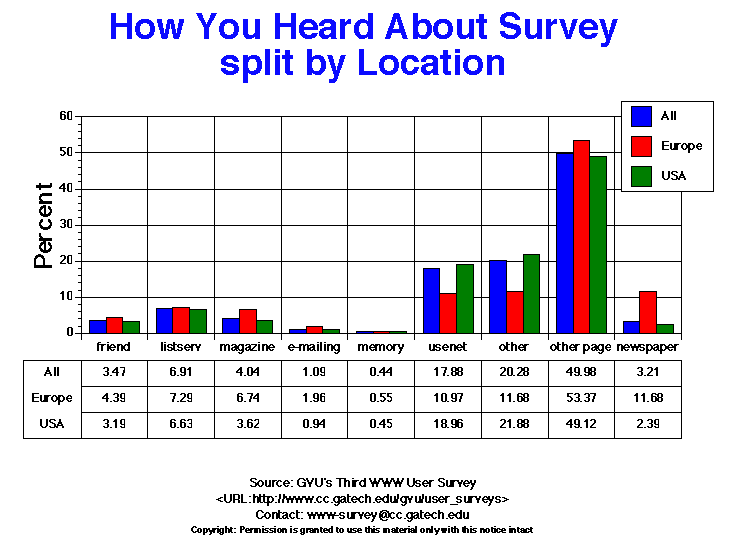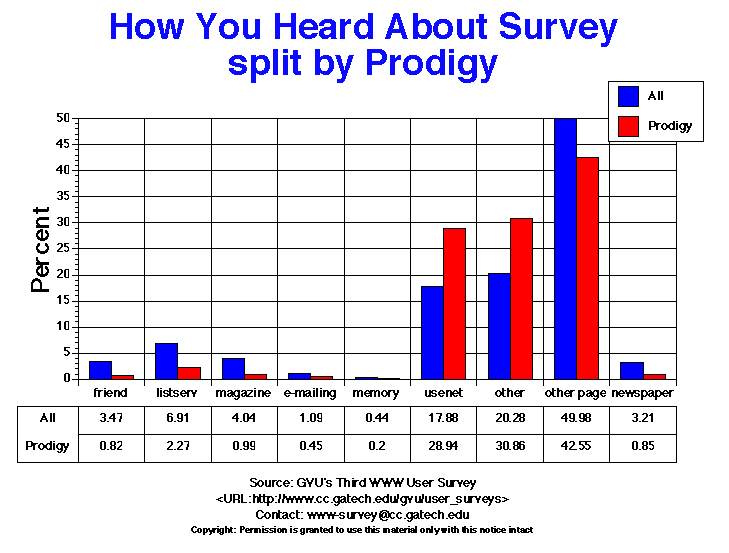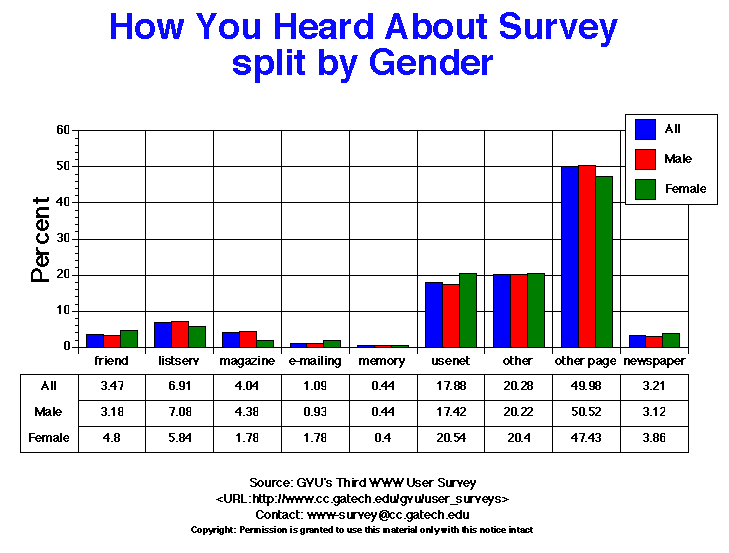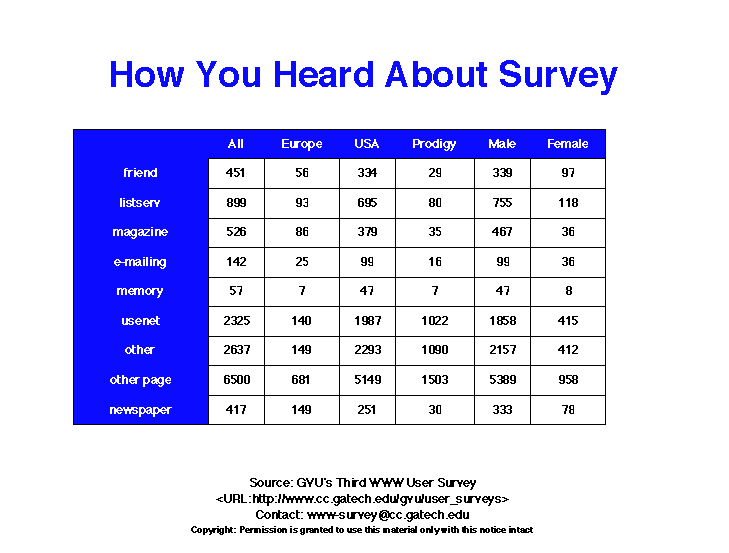
How People Heard About the Surveys
Notes:
- This question attempts to begin to understand the response rates and
various populations on the Internet and Web. This is the first time we
asked the users to inform us how they found out about the current surveys.
We broke the data into groups whom responded via announcements
to newsgroups, other WWW pages, and listservs, etc. to see if these groups
of users are different from one another. This may very well be one of the
most interesting data points for understanding the use of the Web for surveying,
as lack of differences between groups would indicate an insensitivity towards
sampling methods employed.
- Most important was the lack of substantial differences between
gender. This increases the stability of the female/male response distributions
we received, as it confirms that no systematic sampling bias seems to be in
effect. If any segment of the Web user population were excluded,
statistically, we'd expect to find similar gender ratios and response
distributions. Note, the below percentages may add up to more than
100% as users we able to select more than one response.
- Overall, 50% of the users found out about 3rd the survey via other WWW
pages, with
20.3% finding out via "other" sources, and 17.9% finding out via Usenet
newsgroup announcement.
- Memory refers to people who remembered to take the survey, and was the
lowest method cited (0.44%). This indicates that reliance on people to
remember that it is time to participate in a survey is not a very effective
means to accomplish longitude tracking of populations.
- WWW based listserver/mailing lists, e.g. www-announce, etc. accounted
for nearly 6% of all respondents finding out about the survey, thus are not
tremendously effective means to attract attention or draw samples from.
- The "e-mailing" category refers to users whom received mail from out
voluntary survey mailing list. While very few users found out about the
3rd surveys via this method (1.1%) as compared to other methods, we note that
the 142 users who did respond accounted for 1/4 of the survey mailing list at
the time. Thus, survey exclusive mailing lists are a pretty
efficient way to announce the beginning of a survey to people.
- It seems that the European newspapers have circulated the Survey
more than US ones, as 11.7% of Europeans reported newspapers as a source, with
only 2.4% for US users. European users were also less likely to have found
out about the survey via Usenet newsgroups (11.0% European vs 21.9% US).
By Location

Notes:
- Prodigy users were more likely to find out about the survey via Usenet
newsgroups than the overall population (28.9% Prodigy vs 17.9% All), but
less likely to find out via other Web Pages (42.5% Prodigy vs 50.0% All).
Intuitively, this makes sense, as Prodigy users just began to gain access
to the Web at the time the survey was conducted, and thus probably had yet to
discover as many pages and settle into stable navigation behaviors.
By Prodigy

Notes:
- The three most effective entry points to the survey were: pointers from
other Web pages (47.4% women vs 50.5% men), other sources (20.4% women vs 20.2%
men), and Usenet news announcements (20.5% women vs 17.4% men).
- There were no significant differences between the response profiles of
women and men for the following categories: remembering to take the survey,
other Web pages, the newspaper, other sources, and listserve announcements.
There were differences found for: finding out via friends, magazines,
Usenet news, and the www-surveying mailing list. Given the low effectiveness
of all but other Web pages and Usenet news announcements, most of these
differences lead to nominal effects.
- Thus, the surveys do not appear to suffer much from sampling biases with
respect to gender. If a segment of the Web user population were excluded,
statistically, we'd expect to find similar response distribution for women
and men.
By Gender

Table of Data for All Categories

For more information or to submit comments:
send e-mail to www-survey@cc.gatech.edu.
GVU's WWW Surveying Team
Graphics, Visualization, & Usability Center
College of Computing
Georgia Institute of Technology
Atlanta, GA 30332-0280

